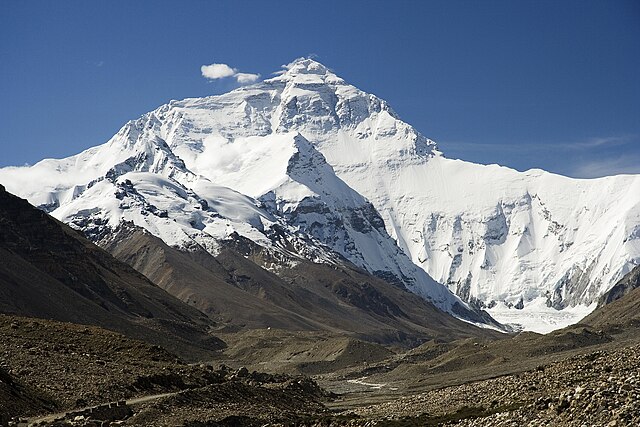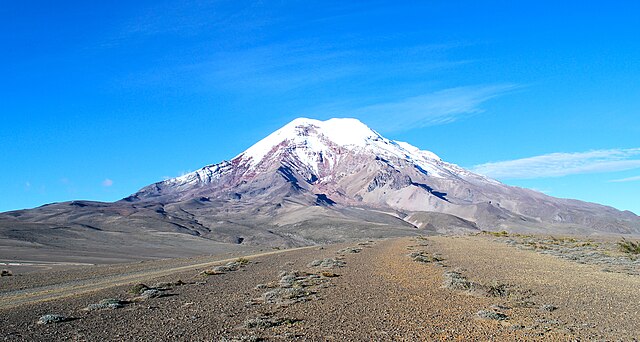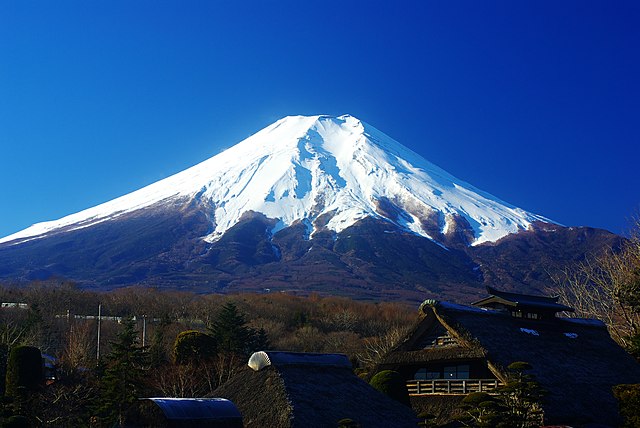Orogeny is a mountain-building process that takes place at a convergent plate margin when plate motion compresses the margin. An orogenic belt or orogen develops as the compressed plate crumples and is uplifted to form one or more mountain ranges. This involves a series of geological processes collectively called orogenesis. These include both structural deformation of existing continental crust and the creation of new continental crust through volcanism. Magma rising in the orogen carries less dense material upwards while leaving more dense material behind, resulting in compositional differentiation of Earth's lithosphere. A synorogenic process or event is one that occurs during an orogeny.
Geologic provinces of the world (USGS) Shield Platform Orogen Basin Large igneous province Extended crust Oceanic crust: 0–20 Ma 20–65 Ma >65 Ma
An example of thin-skinned deformation (thrust faulting) of the Sevier Orogeny in Montana. The white Madison Limestone is repeated, with one example in the foreground (that pinches out with distance) and another to the upper right corner and top of the picture.
Sierra Nevada Mountains (a result of delamination) as seen from the International Space Station
Mount Rundle, Banff, Alberta
A mountain is an elevated portion of the Earth's crust, generally with steep sides that show significant exposed bedrock. Although definitions vary, a mountain may differ from a plateau in having a limited summit area, and is usually higher than a hill, typically rising at least 300 metres (980 ft) above the surrounding land. A few mountains are isolated summits, but most occur in mountain ranges.
Mount Everest, Earth's highest mountain
Chimborazo, Ecuador, whose summit is the point farthest away from the Earth's center
Fuji volcano
Illustration of mountains that developed on a fold that has been thrust








